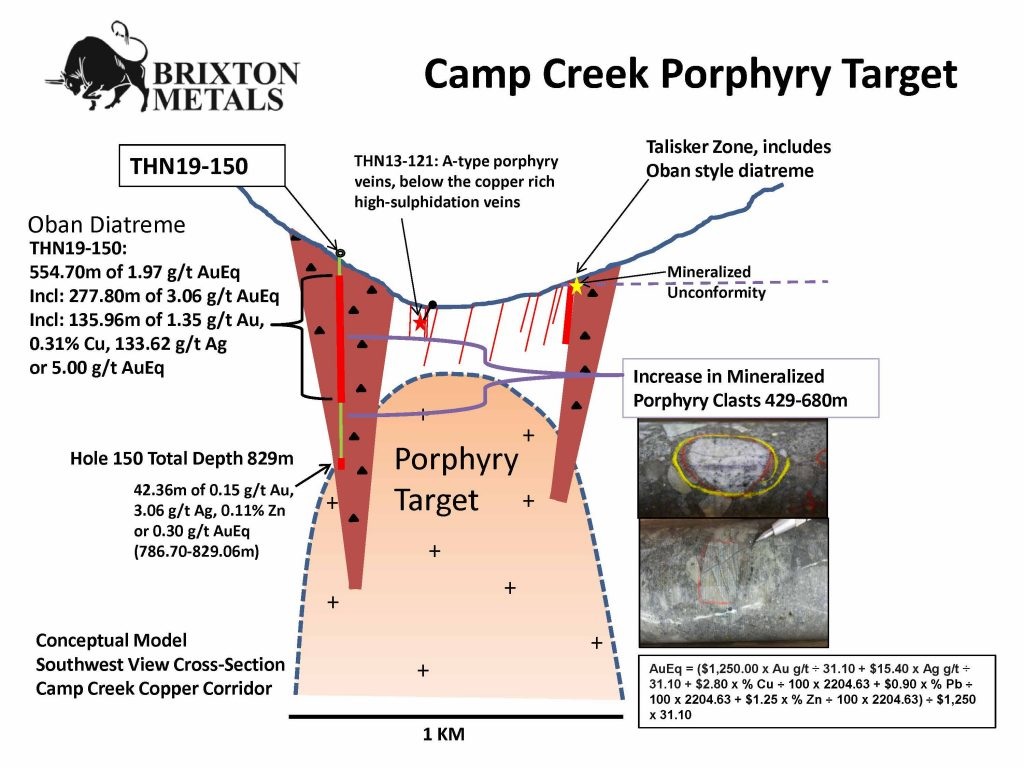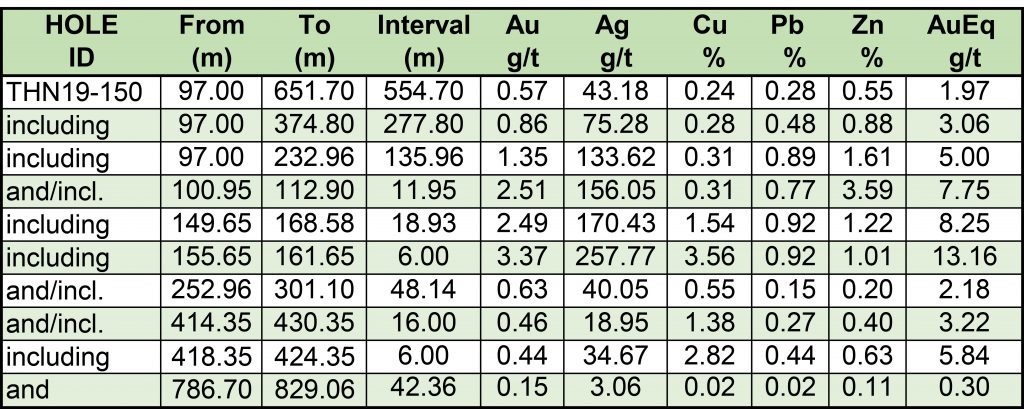
As you may remember, Brixton Metals (BBB.V) was planning to drill one hole at Thorn this year to drill-test the copper mineralization that was encountered in previous exploration programs. The assay results of that hole were published yesterday and were much better than we dared to hope for.
The hole was drilled to a total depth of 829 meters, but the key zone was encountered between 97 meters and 652 meters which increased the total thickness of the mineralization to a whopping 555 meters. And that mineralization appears to contain high-grade copper and gold values. Over the entire 554.7 meter interval, the average grade was 0.57 g/t gold, 0.24% copper, just over 43 g/t silver as well as a combined 0.83% ZnPb. Throughout this 554.7 meter interval, several higher grade zones were encountered including a 136 meter thick zone containing 5 g/t AuEq (with 1.35 g/t gold, 0.31% copper and 2.5% ZnPb).

Considering Newcrest Mining (ASX:NCM) is mining ore with an average grade of around 0.3% copper and 0.3 g/t gold at its underground Cadia mine in Australia, it’s pretty clear the grades of the 555 meter interval are viable if the right (experienced) operator would have a closer look at the project. Brixton’s main target should now be to determine the size of the copper-gold mineralization. Now we know the mineralization is 555 meters thick at that specific spot, but Brixton will have to figure out the total footprint of this brecchia pipe. 100 by 100 meters would result in 15.5 million tonnes of rock, 200 by 200 meters would already increase the tonnage to in excess of 60 million tonnes. The bigger it gets, the better, as Thorn is located in a remote area so the carrot dangling in front of the more senior companies needs to be juicy enough for them to consider having a closer look at Thorn.
A lot more work will be needed at Thorn and Brixton could be planning to raise a bit more money soon as we would like Brixton to take advantage of the summer season up there instead of waiting for next year.
In any case, this hole puts the greater Thorn region in a whole new perspective. What started out as a high-grade silver discovery now evolved into what appears to be a copper district. Again, a lot more will be needed to figure out the entire geological model and the eventual footprint of the copper zone. But yesterday’s market reaction (up 81% on 10.8 million shares) wasn’t an exaggeration.
Go to Brixton’s website
The author has a long position in Brixton Metals. Brixton is a sponsor of the website. Please read the disclaimer

